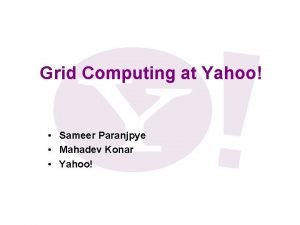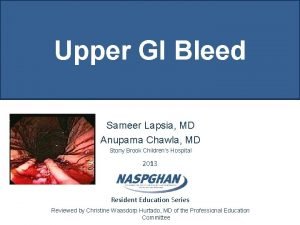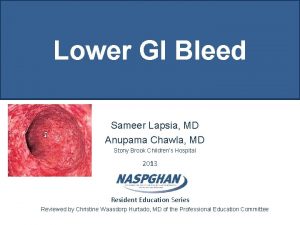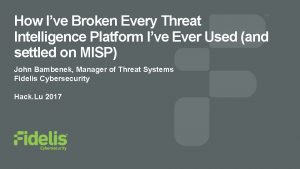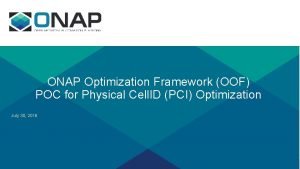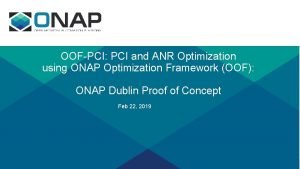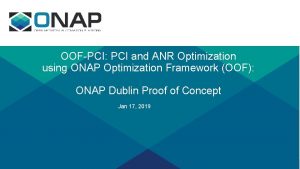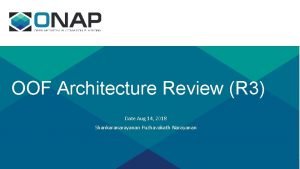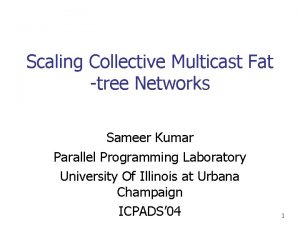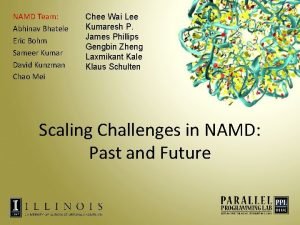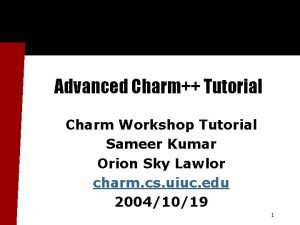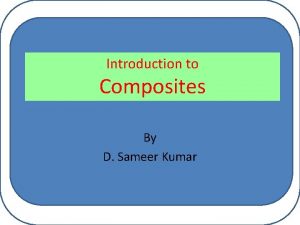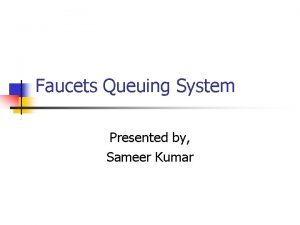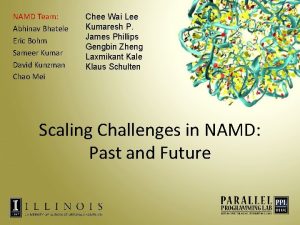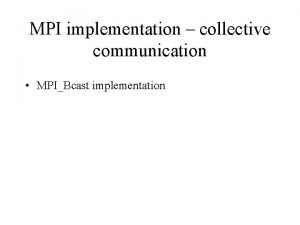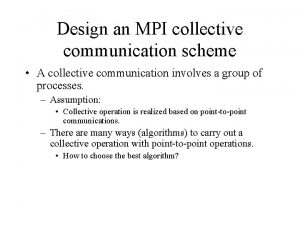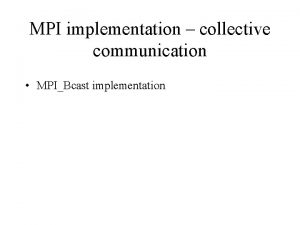An Optimization Framework for Collective Communication Sameer Kumar




















- Slides: 20

An Optimization Framework for Collective Communication Sameer Kumar Parallel Programming Laboratory University Of Illinois at Urbana-Champaign

Collective Communication w Communication operation where all (or most) the processors participate n n For example broadcast, barrier, all reduce, all to all communication etc Applications: NAMD multicast, NAMD PME, CPAIMD w Issues n n n Performance impediment Naïve implementations often do not scale Synchronous implementations do not utilize the coprocessor effectively Charm++ Workshop 2003

All to All Communication w All processors send data to all other processors n All to all personalized communication (AAPC) l n MPI_Alltoall All to all multicast/broadcast (AAMC) l MPI_Allgather Charm++ Workshop 2003

Optimization Strategies w Short message optimizations n n High software over head (α) Message combining w Large messages n Network contention w Performance metrics n n Completion time Compute overhead Charm++ Workshop 2003

Short Message Optimizations w Direct all to all communication is α dominated w Message combining for small messages n n Reduce the total number of messages Multistage algorithm to send messages along a virtual topology Group of messages combined and sent to an intermediate processor which then forwards them to their final destinations AAPC strategy may send same message multiple times Charm++ Workshop 2003

Virtual Topology: Mesh Organize processors in a 2 D (virtual) Mesh Phase 1: Processors send messages to row neighbors Phase 1: Processors send messages to column neighbors 2* Message from (x 1, y 1) to (x 2, y 2) goes via (x 1, y 2) Charm++ Workshop 2003 messages instead of P-1

Virtual Topology: Hypercube 6 2 7 w Dimensional exchange w Log(P) messages instead of P-1 3 6 0 1 Charm++ Workshop 2003

AAPC Performance Charm++ Workshop 2003

AAPC Performance on 1024 processors of Lemieux Charm++ Workshop 2003

Radix Sort AAPC Time (ms) Size Charm++ Workshop 2003 Direct Mesh 2 KB 333 221 4 KB 256 416 8 KB 484 766

AAPC Processor Overhead Mesh Completion Time Direct Compute Time Mesh Compute Time Performance on 1024 processors of Lemieux Charm++ Workshop 2003

Compute Overhead: A New Metric w Strategies should also be evaluated on compute overhead w Asynchronous non blocking primitives needed n n Compute overhead of the mesh strategy is a small fraction of the total AAPC completion time A data driven system like Charm++ will automatically support this Charm++ Workshop 2003

NAMD Performance of Namd with the Atpase molecule. PME step in Namd involves an a 192 X 144 processor collective operation with 900 byte messages Charm++ Workshop 2003

Large Message Issues w Network contention n n Topology specific optimizations Contention free schedules Charm++ Workshop 2003

Fat-tree Topology w Used by many clustering technologies w Properties n n High bisection bandwidth O(P) Best topology for any volume of hardware Can simulate any other network within a logarithmic factor Many communication patterns are congestion free Charm++ Workshop 2003

K-ary n-trees a) b) 4 -ary 1 -tree 4 -ary 2 -tree c) 4 -ary 3 tree Charm++ Workshop 2003

Contention Free Permutations w Dimensional exchange n In stage j processor i sends data to i (XOR) 2 j w Prefix send n In stage j processor i sends data to i (XOR) j Charm++ Workshop 2003

Prefix Send Strategy w All to all communication with large messages w P-1 stages n In stage j, processor i sends a message to processor (i XOR (j+1)) w Can be used for both AAPC and AAMC w Effective bandwidth of 520 MB/s/node on 64 nodes of Lemieux n 80% of the achievable bisection bandwidth) Charm++ Workshop 2003

Summary w We present optimization strategies for collective communication for both small and large messages w Small message collective communication optimized by message combining w Large message performance enhanced by the use of contention free schedules w New performance metric n Computation overhead Charm++ Workshop 2003

Future Work w Optimal strategy depends on (P, m) n Develop a learning framework using principle of persistence w Physical topologies n Bluegene (3 -d grid) w Many to many communication n Analysis and new strategies w Smart strategies for multiple simultaneous AAPCs over sections of processors Charm++ Workshop 2003
 Sameer paranjpye
Sameer paranjpye Black, tarry stool picture
Black, tarry stool picture Sameer awsare kaiser
Sameer awsare kaiser Sameer lapsia
Sameer lapsia Stomodeum
Stomodeum Collective intelligence framework
Collective intelligence framework Barncat misp
Barncat misp Onap optimization framework
Onap optimization framework Onap optimization framework
Onap optimization framework Onap oof
Onap oof Onap optimization framework
Onap optimization framework What is collective communication
What is collective communication Formuö
Formuö Typiska drag för en novell
Typiska drag för en novell Tack för att ni lyssnade bild
Tack för att ni lyssnade bild Ekologiskt fotavtryck
Ekologiskt fotavtryck Varför kallas perioden 1918-1939 för mellankrigstiden?
Varför kallas perioden 1918-1939 för mellankrigstiden? En lathund för arbete med kontinuitetshantering
En lathund för arbete med kontinuitetshantering Adressändring ideell förening
Adressändring ideell förening Personlig tidbok
Personlig tidbok Anatomi organ reproduksi
Anatomi organ reproduksi
